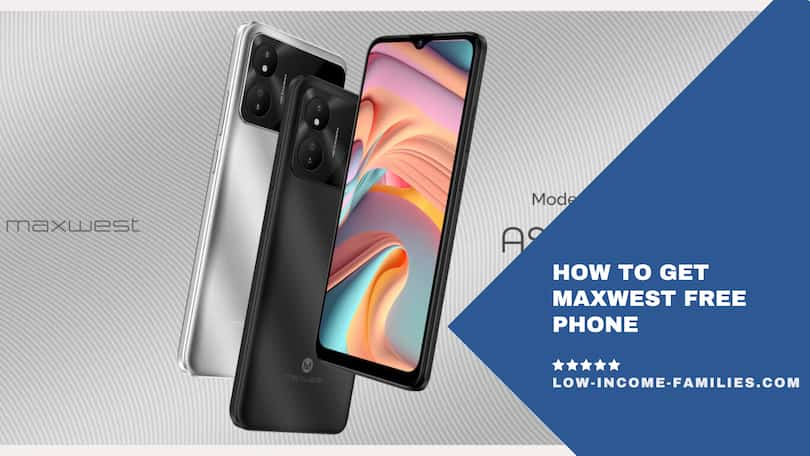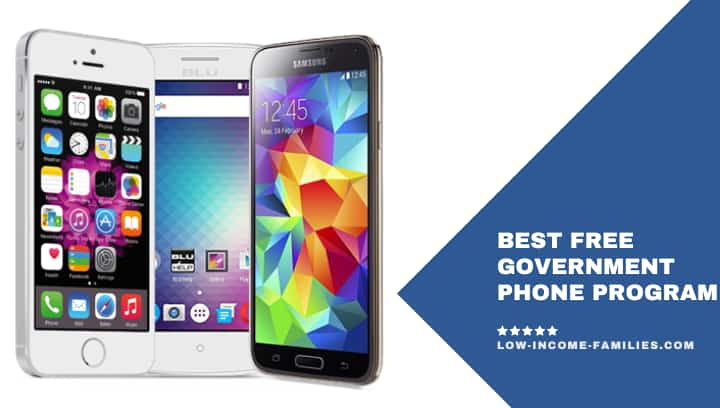In today’s interconnected world, the ability to communicate is not just a convenience but a fundamental right.
Recognizing this, various government initiatives aim to ensure that physical disabilities and financial constraints do not prevent individuals from accessing this essential tool.
Free government cell phones for the disabled represent a critical step toward achieving digital inclusivity, empowering those with disabilities to stay connected, safe, and informed.
This guide delves into the heart of these initiatives, shedding light on the programs designed to bridge the connectivity gap and exploring the multifaceted importance of cell phones in the lives of disabled individuals.
What is The Government-Funded Lifeline Program?
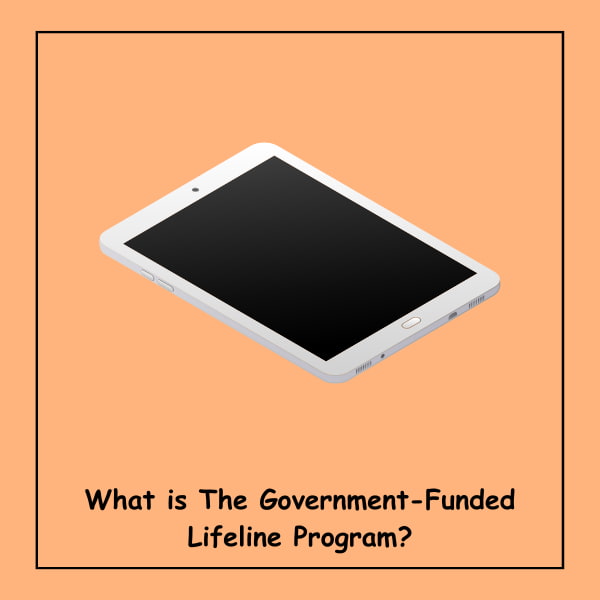
At the forefront of these efforts is the Lifeline Program, a federal initiative that underscores the government’s commitment to universal service.
Established to make communication services more accessible and affordable, the Lifeline Program specifically targets demographics that might otherwise be marginalized, including low-income families, the elderly, students, and, notably, individuals with disabilities.
By providing monthly discounts on phone services, the Lifeline Program plays a pivotal role in ensuring that economic barriers do not impede one’s access to essential communication tools.
It embodies the principle that staying connected should be a right, not a privilege, for all members of society, regardless of their physical capabilities or financial status.
Why Are Cell Phones Necessary for the Disabled?
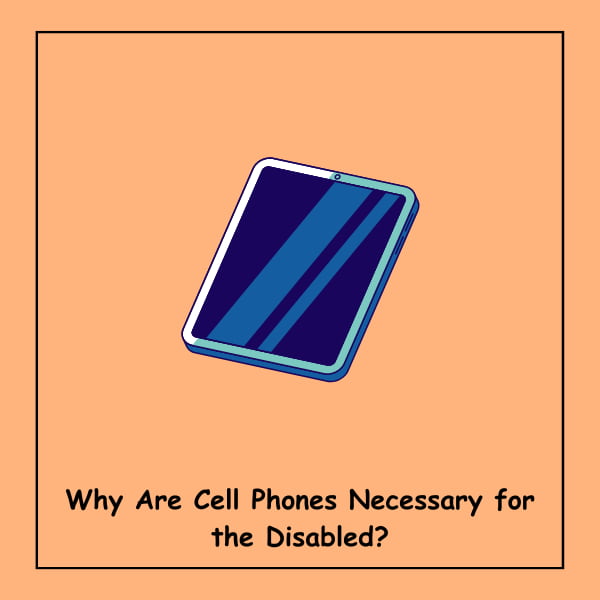
The significance of cell phones for individuals with disabilities cannot be overstated, serving not just as a means of communication but as vital tools for personal safety, medical safety, and bolstering mental health.
For Personal Safety
In the context of personal safety, cell phones act as a lifeline for those with disabilities. They provide a crucial link to the outside world, enabling immediate contact with emergency services, family, and friends in times of need.
This connectivity is vital, offering reassurance and security that assistance is always within reach, thereby enhancing the independence and confidence of disabled individuals as they navigate daily life.
For Medical Safety
Regarding medical safety, the utility of cell phones is equally critical. For individuals living with disabilities, the need for swift access to medical services and healthcare providers can be a regular necessity rather than an occasional requirement.
Cell phones facilitate instant communication during health crises, allowing for timely medical intervention and support.
This capability is indispensable, significantly impacting the health outcomes and overall well-being of disabled persons by ensuring they can quickly reach out for help whenever needed.
For Mental Health
Moreover, the impact of cell phones on mental health is profound and multifaceted.
Beyond facilitating essential communications, these devices serve as gateways to social interaction, entertainment, and a wealth of information.
For many disabled individuals, the ability to connect with others, engage with content that enriches their lives, and access services that enhance their autonomy can dramatically improve their mental health and quality of life.
Cell phones help break down the barriers of isolation, offering a sense of community and belonging that is crucial for emotional well-being.
Top 10 Best Free Cell Phones for Disabled on Social Security in 2024
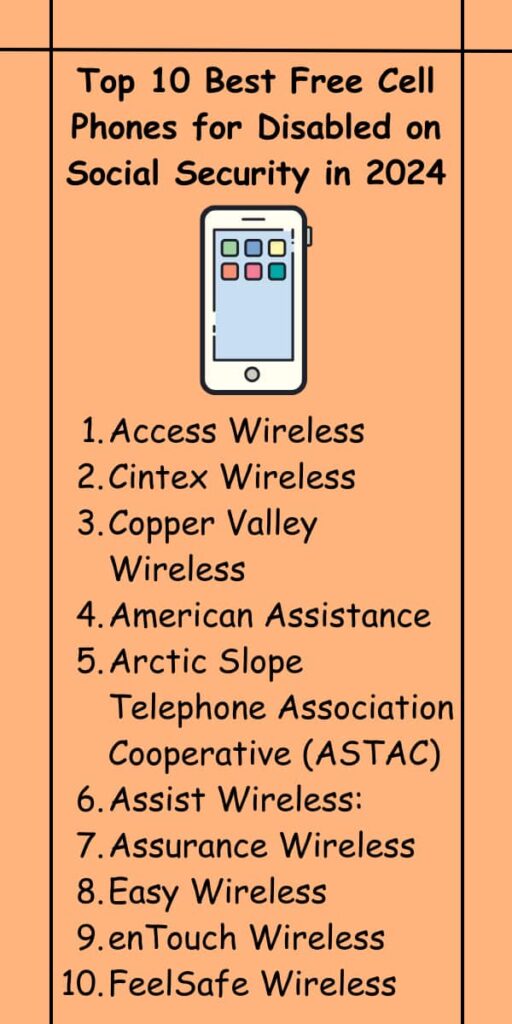
In 2024, the landscape for free cell phones for disabled persons on Social Security has seen remarkable evolution, offering a wide array of devices that cater to the unique needs of the disabled community.
These phones are not just communication devices; they are lifelines that provide safety, connectivity, and independence.
Here, we delve into the top 10 providers that stand out for their commitment to serving disabled individuals on Social Security with top-notch services and state-of-the-art devices.
- Access Wireless: Leading the charge, Access Wireless expands its reach across numerous states, providing an extensive selection of cell phones that cater specifically to disabled persons. With diverse plans addressing different data, texting, and calling needs, Access Wireless ensures that disabled individuals on Social Security have access to the connectivity they require for daily communication and emergencies.
- Cintex Wireless: As a prominent Lifeline provider, Cintex Wireless operates in multiple states, offering a wide array of cell phone plans tailored to free cell phones for disabled persons. Their focus on customer satisfaction, combined with robust network coverage, guarantees reliable connectivity for individuals seeking free government phones for the disabled.
- Copper Valley Wireless: Specializing in servicing Alaska, Copper Valley Wireless is dedicated to delivering quality communication tools to disabled individuals, particularly in remote areas. They offer free cell phone services for disabled individuals, acknowledging the challenges faced by residents in isolated locations.
- American Assistance: With operations spread across various states, American Assistance provides free cell phones under the American broadband scheme, incorporating essential features like free talk time and affordable internet data. This proves beneficial for phones for disabled adults, who rely on these services for safety and daily living.
- Arctic Slope Telephone Association Cooperative (ASTAC): Though smaller in scale, ASTAC delivers high-quality services in Alaska’s smaller towns. Their focus on reliable and accessible services makes them a valuable provider for cell phones for handicapped persons.
- Assist Wireless: Offering services in states including Maryland, Missouri, Arkansas, and Oklahoma, Assist Wireless provides a range of Lifeline cell phone plans. They offer various devices catering to different needs, making their service a versatile choice for phones for disabled adults.
- Assurance Wireless: A subsidiary of Sprint Nextel, Assurance Wireless has broadened its services to many states, offering a variety of plans with strong network coverage. They have emerged as a significant provider for free government phones for disabled individuals, ensuring quality and reliability.
- Easy Wireless: Operating in states like Oklahoma, Missouri, and Kentucky, Easy Wireless stands out for its flexible plans and services. They prioritize high-quality service and accessibility for those on social security, offering cell phones for special needs adults.
- enTouch Wireless: Serving over 33 states, enTouch Wireless provides a broad spectrum of government-subsidized cell phones and communication services. They are a key player in offering cell phones for disabled hands, emphasizing inclusivity and accessibility.
- FeelSafe Wireless: Operating under Air Voice Wireless, FeelSafe Wireless provides services in states such as California, Michigan, and Ohio. They offer plans designed to meet the communication needs of their customers, making them a preferred provider for special needs cell phones.
How to Qualify for A Free Cell Phone for the Disabled?
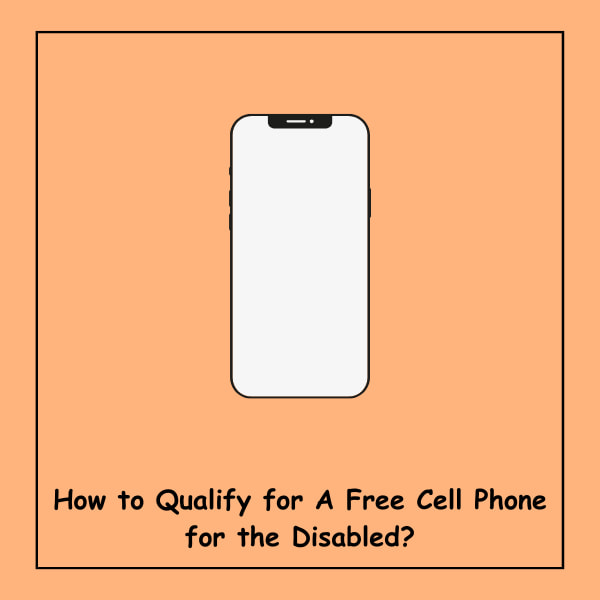
Gaining access to a free cell phone for the disabled is a structured process that ensures essential communication tools are available to those who need them most.
The qualification framework is designed with inclusivity in mind, focusing on three main criteria: income verification, program membership proof, and disability certification, each serving as a cornerstone for eligibility.
Income Verification
Income verification plays a critical role in the qualification process. This step requires individuals to demonstrate that their income is within or below a certain percentage of the Federal Poverty Level, making the program accessible to those who genuinely cannot afford mobile communication services.
Applicants are asked to provide comprehensive financial documents, such as tax returns, pay stubs, or Social Security benefit statements, to paint a clear picture of their financial situation.
Program Membership Proof
Eligibility extends to those already participating in various government assistance programs.
Program membership proof entails providing tangible evidence, such as membership cards, benefit statements, or official letters of participation in programs like SNAP, Medicaid, or Supplemental Security Income (SSI).
This documentation serves as a testament to the applicant’s need for additional support, streamlining the path toward obtaining a free cell phone.
Disability Certification
For individuals with disabilities, disability certification is a crucial step. This process involves securing documentation or certification from recognized medical authorities or healthcare providers that validate the applicant’s disability status.
Such certification not only confirms the presence of a disability but also highlights the necessity for enhanced communication tools to support the applicant’s daily living and emergency needs.
Who is Eligible for a Free Government Cell Phone
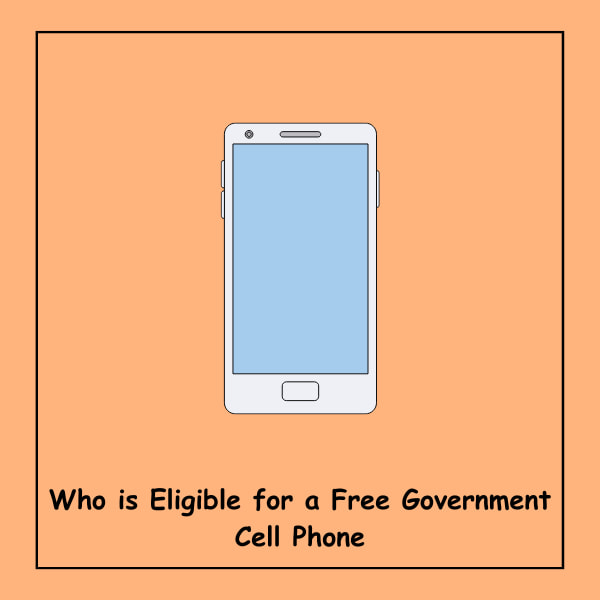
The eligibility for a free government cell phone casts a wide net, intending to encompass individuals from various walks of life who face financial hardships or special circumstances.
It is meticulously determined through an assessment of income level, government program beneficiaries, and special eligibility for disabled individuals.
Assessment of Income Level
The assessment of income level is a fundamental eligibility criterion. This assessment ensures that the program’s benefits are directed toward individuals and families whose income levels are significantly lower than the Federal Poverty Guidelines.
By setting these income thresholds, the program aims to provide support where it is most needed, ensuring those struggling financially can still access vital communication services.
Government Program Beneficiaries
Individuals who benefit from federal assistance programs are automatically considered eligible.
Being a beneficiary of government programs such as Medicaid, SNAP, or SSI acts as a qualifier for the free cell phone service.
This criterion recognizes that individuals already receiving government support likely face financial constraints that extend to their ability to afford communication services.
Special Eligibility for Disabled Individuals
There’s a special eligibility criterion for disabled individuals, acknowledging the unique challenges they face.
Those receiving disability benefits, such as SSDI, are typically eligible for the program.
This special consideration ensures that disabled individuals, who may require more frequent access to health services and emergency support, are provided with the means to maintain essential communication channels for their safety and well-being.
Eligibility Criteria for Free Government Cell Phone
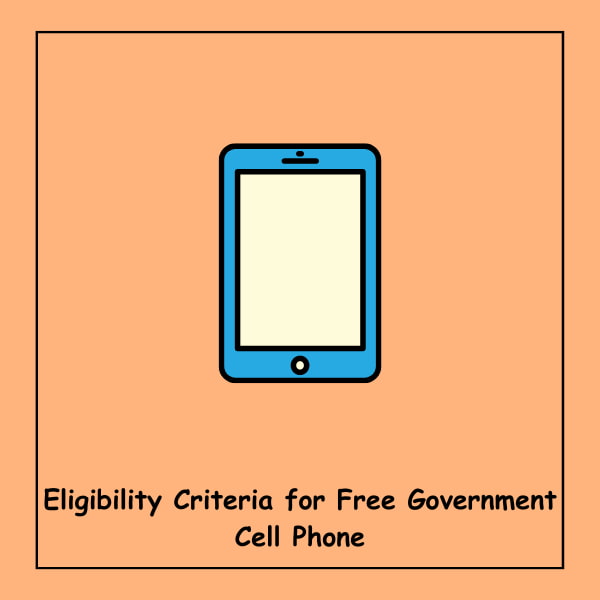
Securing a free government cell phone requires adherence to specific eligibility criteria designed to ensure that these vital communication tools reach those in genuine need.
These criteria encompass financial qualifications, participation in government assistance programs, and considerations for individuals with disabilities.
- Income-Based Eligibility:
- To meet this criterion, an individual’s or family’s income must fall at or below a certain threshold, typically defined as a percentage of the Federal Poverty Level (FPL). This criterion aims to target aid to households that struggle financially and are unable to afford basic phone services on their own. Applicants must provide official documentation that clearly demonstrates their income level, ensuring a transparent and fair assessment process.
- Participation in Government Assistance Programs:
- Eligibility is extended to those actively participating in one or more government assistance programs such as Medicaid, the Supplemental Nutrition Assistance Program (SNAP), Federal Public Housing Assistance (FPHA), or the Supplemental Security Income (SSI). These programs are indicators of financial need, and enrollment in them automatically qualifies individuals for the free cell phone program. Proof of participation, such as an award letter or a benefits statement, is required to verify eligibility under this criterion.
- Disability Status:
- Individuals with disabilities are given special consideration under the program, recognizing the additional barriers they face in accessing technology and communication services. Eligibility requires proof of receipt of disability benefits, such as Social Security Disability Insurance (SSDI) or Veterans Disability Compensation. This documentation is crucial in establishing the applicant’s need for a cell phone as a tool for independence, safety, and enhanced quality of life.
Document Required for Free Government Cell Phone
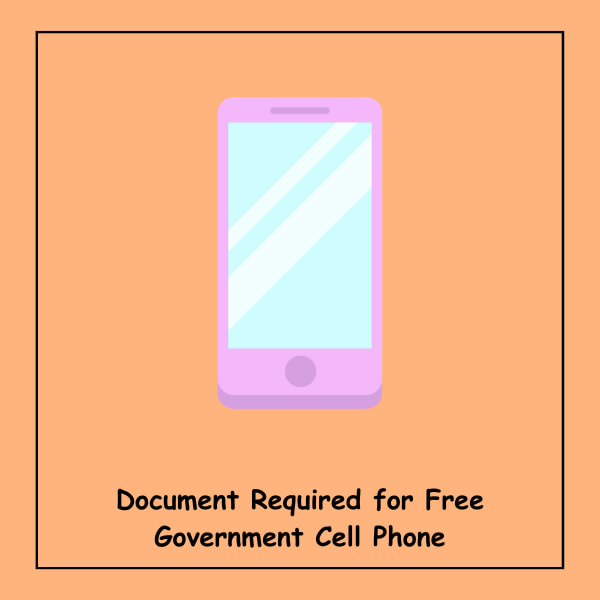
Applicants must submit a range of documents to prove their eligibility for a free government cell phone. These documents are critical in verifying the financial status, program participation, and disability status of the applicants.
- Proof of Income:
- Documents such as the most recent tax return, consecutive pay stubs from the last three months, or benefit statements from Social Security, unemployment, or workers’ compensation serve as evidence of income. These documents must be current and accurately reflect the applicant’s financial situation to ensure those most in need receive assistance.
- Proof of Program Participation:
- To verify enrollment in qualifying government assistance programs, applicants must provide award letters, membership cards, or official documents issued by the program administrators. These documents confirm the applicant’s active participation in the programs, making them eligible for the free cell phone service.
- Proof of Disability:
- For applicants with disabilities, documents such as a disability benefits award letter from the Social Security Administration or a certification from a healthcare provider establish the disability status. This proof is essential in highlighting the necessity of a cell phone for managing health, safety, and daily living activities.
How to Apply for A Free Phone for The Disabled

The application process for a free phone for the disabled is structured to ensure accessibility and fairness.
It involves selecting a provider, completing an application, submitting documentation, and following through with activation and setup.
- Research and Choose a Provider:
- Begin by identifying Lifeline service providers available in your area. Compare their offerings in terms of plans, network coverage, and device options. Consider factors like data allowances, calling minutes, and text message limits to select a provider that best fits your communication needs.
- Filling Out the Application:
- Complete the provider’s application form with accurate and comprehensive information. Applications can typically be filled out online on the provider’s website or obtained in paper format from local offices. It’s crucial to provide complete and truthful information to avoid delays or denial of service.
- Document Submission and Verification:
- Alongside the application, submit all required documents that prove your eligibility based on income, program participation, or disability status. These documents are reviewed carefully to confirm your eligibility for the free cell phone program.
- Awaiting Approval:
- After submitting your application and supporting documents, there will be a period of review. The duration of this process varies by provider but is essential for verifying the information provided and determining eligibility.
- Notification and Device Distribution:
- Once approved, you’ll receive a notification detailing how to receive your free cell phone. This may include direct shipping to your address or instructions for picking up the device at a designated location.
- Device Activation and Setup:
- Following receipt of your phone, activate it according to the instructions provided by your service provider. Activation processes may vary, with some devices arriving pre-activated while others may require specific steps to initiate service.
Does the Government Offer Free Phones for the Disabled?
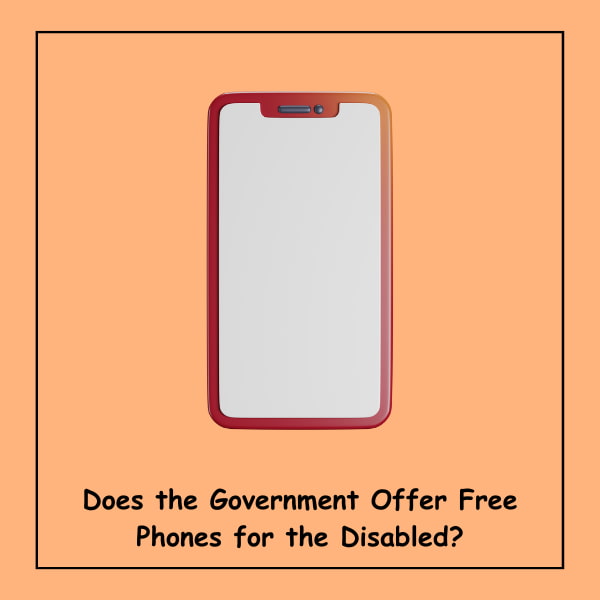
Indeed, the government extends its support to the disabled community through the provision of free phones, facilitated by programs like the Lifeline Assistance and the Affordable Connectivity Program (ACP).
These programs are a testament to the government’s commitment to ensuring that disabilities do not hinder access to vital communication tools.
Through partnerships with various telecommunications companies, these initiatives are specifically designed to cater to the needs of individuals with disabilities, offering them tailored devices and service plans.
This effort underscores the government’s recognition of the importance of connectivity for the disabled, aiming to eliminate barriers to communication and enhance their participation in the digital realm.
Benefits of Getting Free Phones for the Disabled
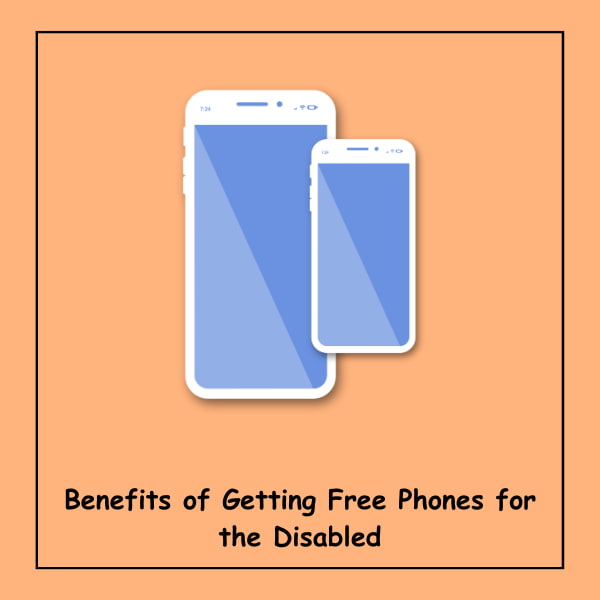
The provision of free phones for the disabled carries transformative benefits, significantly enriching the lives of recipients in multiple facets:
- Enhanced Communication: The foremost benefit is the facilitation of constant communication with family, friends, healthcare providers, and emergency services. This connectivity is essential, providing a safety net and ensuring assistance is readily available when needed.
- Access to Health Services: These phones serve as critical links to healthcare services, enabling users to conveniently contact medical professionals, manage appointments, and receive health-related alerts and information, thus playing a pivotal role in the proactive management of health conditions.
- Increased Independence: The ability to perform daily activities such as online banking, shopping, and accessing government services directly from their phones significantly bolsters the independence of disabled individuals, reducing dependency on others.
- Social Inclusion: By offering avenues for social engagement through social media, forums, and various communication apps, free phones help mitigate feelings of isolation, fostering a sense of belonging and community among disabled persons.
- Access to Emergency Services: The importance of immediate access to emergency services cannot be overstated. In urgent situations, having a phone can be lifesaving, providing a direct line to emergency responders.
- Educational and Employment Opportunities: Free phones unlock opportunities for education and employment, allowing users to explore online courses, apply for jobs, and participate in virtual interviews, thereby enhancing their skills and improving their prospects for economic independence.
- Empowerment through Information: Access to the internet means access to information, enabling disabled individuals to stay informed, make educated decisions, and advocate for their rights and needs effectively.
Conclusion
In essence, the government’s initiative to provide free phones for the disabled marks a critical step toward fostering an inclusive, accessible society.
These programs do more than just offer a means of communication; they empower individuals with disabilities by providing tools that support independence, safety, health management, and social connectivity.
As we move forward in an increasingly digital age, the continued expansion and enhancement of these initiatives are paramount.
Ensuring that individuals with disabilities remain connected and integrated into the fabric of our digital society is not just beneficial but essential for building a more inclusive community where everyone has the opportunity to thrive.
[the_ad id=”39205″]
Frequently Asked Questions (FAQ):
What Is the Lifeline Program, and How Does It Assist Individuals with Disabilities?
The Lifeline Program is a federal initiative aimed at making communication services more accessible and affordable. It specifically targets marginalized demographics, including individuals with disabilities, by providing monthly discounts on phone services to ensure they have access to essential communication tools.
Why Are Cell Phones Considered Necessary for Individuals with Disabilities?
Cell phones are vital for personal safety, medical safety, and mental health support. They act as lifelines, providing immediate contact with emergency services and facilitating quick access to medical services. Additionally, cell phones contribute to improved mental health by breaking down barriers of isolation and offering avenues for social interaction and entertainment.
Which Are the Top 10 Providers Offering Free Cell Phones for Disabled Individuals on Social Security in 2024?
The top 10 providers include Access Wireless, Cintex Wireless, Copper Valley Wireless, American Assistance, Arctic Slope Telephone Association Cooperative (ASTAC), Assist Wireless, Assurance Wireless, Easy Wireless, enTouch Wireless, and FeelSafe Wireless.
How Can Disabled Individuals Qualify for a Free Government Cell Phone?
Eligibility is based on income verification, program membership proof (such as participation in government assistance programs), and disability certification. Each criterion serves as a cornerstone for determining eligibility.
What Documents Are Required for the Application of a Free Government Cell Phone for Disabled Individuals?
Required documents include proof of income (tax returns, pay stubs), proof of program participation (membership cards, benefit statements), and proof of disability (disability benefits award letter, certification from healthcare providers).
How Can One Apply for a Free Phone for the Disabled?
The application process involves researching and choosing a Lifeline service provider, filling out the application form with accurate information, submitting required documents for verification, awaiting approval, receiving notification about device distribution, and finally, activating and setting up the device.
Does the Government Offer Free Phones for Disabled Individuals, and What Programs Support This Initiative?
Yes, the government supports free phones for disabled individuals through programs like the Lifeline Assistance and the Affordable Connectivity Program (ACP). These programs aim to eliminate barriers to communication and enhance the participation of disabled individuals in the digital realm.
What Are the Benefits of Getting a Free Phone for Disabled Individuals?
Benefits include enhanced communication, access to health services, increased independence, social inclusion, access to emergency services, educational and employment opportunities, and empowerment through information. These phones serve as transformative tools that enrich the lives of disabled individuals in various aspects.

